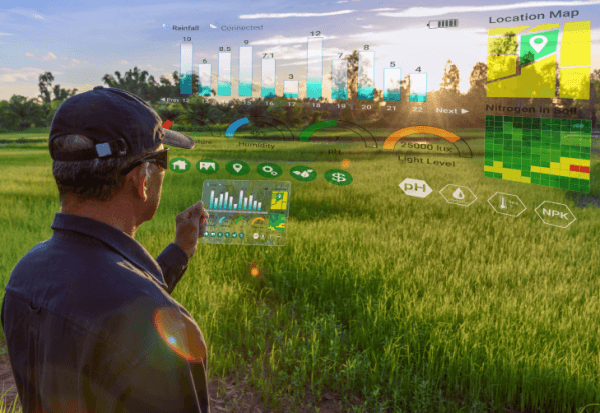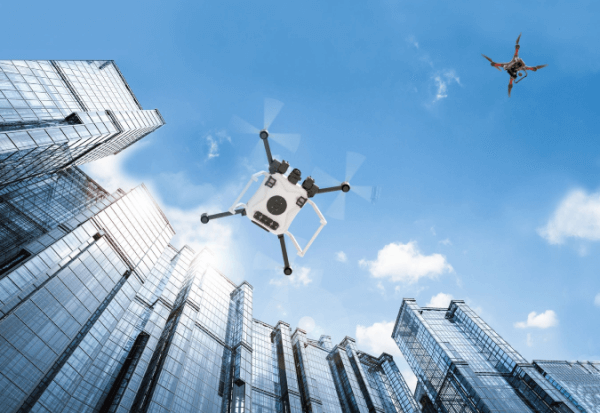The world’s population is increasing at 1.1% per year and is estimated to cross 9.7 billion by 2050. Such growth in population necessitates an equitable increase in food supply. Countries need to boost their food production by up to 70% to meet the basic food needs as estimates have indicated that 30% of the food produced around the world is squandered along the food supply chain. It amounts to nearly US$ 310 billion in developing countries and US$ 680 billion in industrialized countries.
With the increase in population, the food supply chains are becoming more complex. There are multiple challenges in reducing food wastage and delivering safe, high-grade nutritious food. But making small changes like enhancing food processing procedures, connecting farmers directly to the market, and simplifying supply chains can help achieve this goal.
Typical Challenges in Agriculture Supply Chain
A regular agricultural supply chain consists of farmers, suppliers, carriers, retailers, distribution centers, and consumers. The involvement of various actors in the supply chain complicates the complete process and exposes it to several risks. Some of the challenges are listed below:
- The effect of external components on agricultural production like diseases, pests, and weather which are difficult to foresee and control, makes it challenging to stay aware of the set targets.
- The absence of trackability in the agricultural supply chain, exhaustive manual work, and slow-moving financial transactions raise worries around the viability of the agricultural supply chain.
- Counterfeits occur at each stage of the supply chain and negatively impact the business stakeholders, consumers, and governments.
How Can Leveraging Digital Help Build a Resilient Supply Chain
Several businesses and industries create value by introducing analytics and digital technologies to their business models and product offerings. Agriculture players like farmers, suppliers, distributors, and even end customers are discovering the advantages of these technologies in optimizing the extremely complex agriculture supply chain.
Numerous agricultural organizations and enterprises are adopting digital technologies and advanced methods to systematically improve their yields. Horticulture players like ranchers, suppliers, merchants, and even end clients are benefiting from these advancements in improving the very spectacular agribusiness store network.
Introducing digital technologies will not only enhance the productivity and efficiency of the field staff but will also convert all these challenges into opportunities. Improving farming practices and digitizing various field operations will allow us to change the face of the supply chain in Agritech.
With advancements in AI and blockchain-based supply chains, the agriculture players can leverage digital transformation at every step, thus leading to significant potential savings on the cost of moving crops through the system.
Using Artificial Intelligence to Reduce Post Harvest Loss
According to the Food and Agriculture Organization (FAO) of the United Nations, an estimated 1.3 billion tonnes of food is wasted globally through post-harvest losses along the value chain. Today, 815 million people are hungry, and this number is expected to cross 2 billion by 2050.
However, Artificial Intelligence (AI) can be used in agriculture to predict the environmental variables like weather changes, to help farmers make correct harvesting decisions.
These AI applications can help develop patterns that can be used to analyze the data into usable information for the farmers. Additionally, various companies are developing predictive systems to forecast storage conditions and suggest preventive action towards the rotting of stored food products. In some cases, where the labor force is a challenge, machines and robotics can help in the harvesting of crops like strawberries and tea to minimize post-harvest losses.
Blockchain-based Supply Chain Can Help
According to a report by the United Nations, counterfeit food costs nearly $40 billion every year to the global economy. However, the agricultural sector can strive to provide transparency about how a product from the farm reaches a shelf with the strictest adherence to laws, by using blockchain based supply chains. A consumer can scan a QR code to verify the organic nature of the products.
Using a blockchain-enabled tracking system can also significantly reduce fraudulent and counterfeiting activities as such produce will not be able to work its way into legitimate retail stores. The possibility of unsuspecting consumers purchasing these items and suffering potential consequences is minimized.
Digital Twinning for Optimizing the Supply Chain
The agriculture industry can capture more data than ever about everything, starting from agronomy to weather forecast, logistics, and even market price volatility. This has been made possible by increased data storage capacity, dropping storage costs, and constantly growing computational power.
Developing a digital twin of the physical supply chain, from farmers to end customers, and using it to run virtual simulations and optimizations can assist players by adjusting mathematical models including a variety of objective functions, like cycle time, profit, throughput, or even stock improvement, depending on the requirements. Right from, procurement, production, inventory points to transportation and warehousing, each element of the supply chain can be incorporated into the digital twins.
Similarly, making a digital twin of the actual store network, from ranchers to end clients, and utilizing it to run virtual reproductions and enhancements can assist players with adjusting numerical models to incorporate an assortment of target capacities, like process duration, benefit, throughput, or even stock improvement, depending upon the requirements. Right from acquisition and warehousing to transportation management, advanced twins can join each component of the production network.
A clear long-term vision for introducing digital technology in the agriculture industry has become very crucial, as agriculture players are sure to face an increasingly challenging environment in the future due to increasing food demand and limited resources. The ongoing pandemic has also highlighted the need for a more efficient and buoyant supply chain. And digital technologies can offer a powerful set of tools to enable stakeholders to build the new-age supply chain that can tackle all the current challenges and open new ways for those seeking to innovate beyond just needs.
We at Happiest Minds have worked with leading farm producers to improve logistics and modernize their supply chain process to reduce farm product spoilage. If you are interested, please reach out to us, and we would love to have a conversation about how we can get you started on your journey or enable you to get from one point to another much faster.

is an Associate Director at Happiest Minds and brings with her more than 18 years of experience in industries such as retail, e-commerce, healthcare, and automobiles across both the B2B and B2C segments. Sushma’s expertise lies in product management, business analysis, agile frameworks, and research & strategy. She is an integral part of the Hi-Tech team at Happiest Minds and is invested in areas like mobility, UX design, collaboration tools and web apps to enable customer centric solutions for customers across different geos.
Sushma seeks to cogently understand the needs of customers to help devise the right solutions that can scale and adapt to today’s fast changing landscape. In her free time, she loves mentoring people from the BA community.






